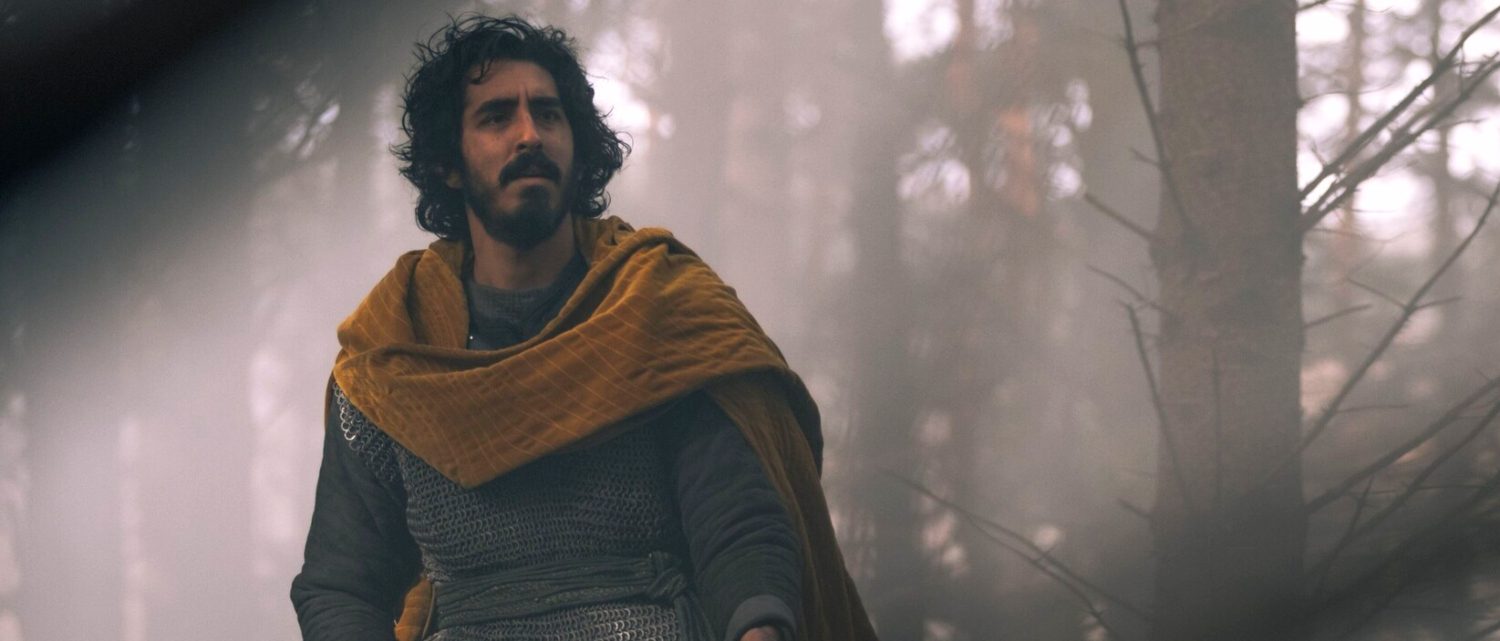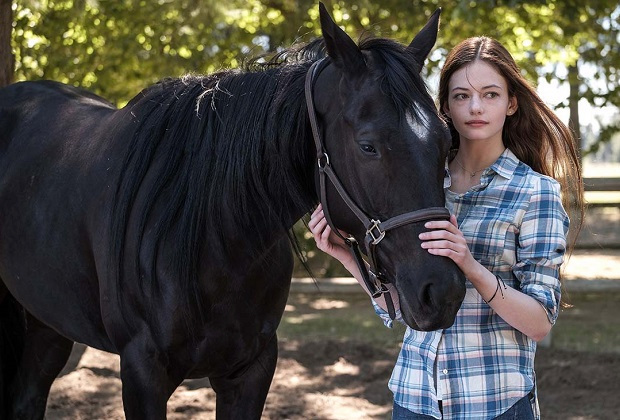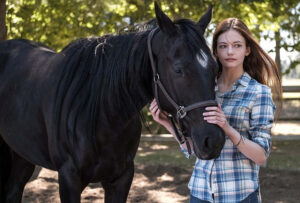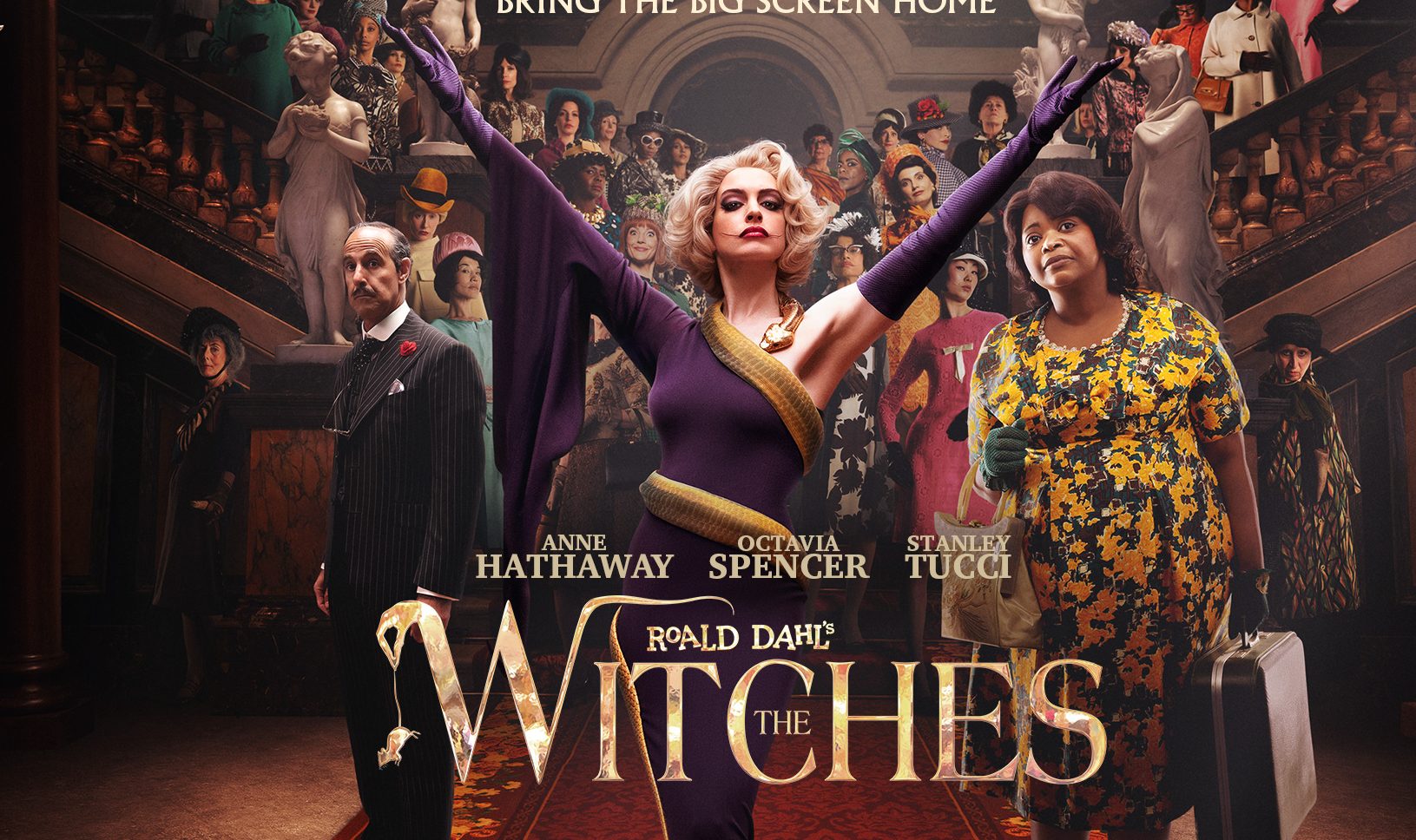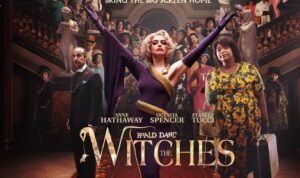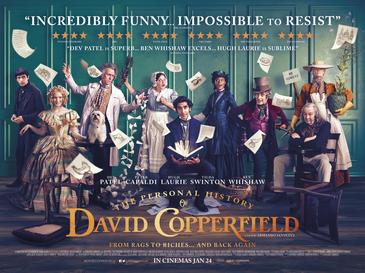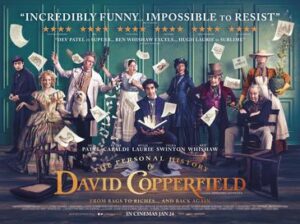The Green Knight
Posted on July 28, 2021 at 12:44 pm
A-| Lowest Recommended Age: | High School |
| MPAA Rating: | Rated R (Graphic Nudity|Violence|Some Sexuality) |
| Profanity: | None |
| Alcohol/ Drugs: | None |
| Violence/ Scariness: | Fantasy/adventure peril and violence, swords, battle axe, graphic and disturbing images including severed heads, reference to rape |
| Diversity Issues: | Class issues |
| Date Released to Theaters: | July 30, 2021 |

It is based on one of the classic works of world literature, a 15th century poem by an unknown author about a knight from the days of King Arthur. While most tales of the Knights of the Round Table are about daring quests for a grand purpose like rescuing a maiden or finding the Holy Grail, Sir Gawain’s quest is stranger and more mythic, perhaps best seen as a metaphor for an internal quest. Gawain is as confused as we are, and his head is on the line. Literally.
Dev Patel follows his sensitive, compelling, and joyful performance as David Copperfield last year with another showing his unquenchable screen chemistry and fearless honesty in portraying characters who confront painful lessons of loss and defeat. As both actor and movie star, he is never less than completely authentic, and pure magic on screen.
David Lowrey (“The Old Man and the Gun,” “A Ghost Story,” “Pete’s Dragon”) wrote and directed this version of the story, at least the fourth filmed adaptation, indicated by the increasingly modern fonts showing the title. Lowery’s gift for exquisite images imparting a mythic quality to film is well-suited to this tale. The first image is so still it could almost be a medieval painting, with Gawain in royal robes and a crown that looks like the halos in icons of saints. It burns. The next image is so still it might also be a painting, with geese and horses in an old courtyard. It takes a moment to realize that there is a fire on a roof in the back.
Gawain is wakened with a splash of water on the face by Essel (Alicia Vikander), whose pixie haircut, rough clothes, and accent tell us they are not in the same class. There is genuine affection as well as a careless condescension in the way he grabs at her. But she reminds him that it is Christmas morning, and he is expected at the castle. When he arrives there, he lies to his mother (a majestic Sarita Choudhury), telling her he has been at mass all night. We can see that he is impetuous, a bit spoiled, and utterly untested.
As the courtiers gather for Christmas dinner, King Arthur (Sean Harris) unexpectedly gives Gawain the honor of sitting beside him, and invites him to share a story with the group. “Tell me a tale of yourself so that I might know thee.” As he looks out at the “legends” among the knights at the round table, Gawain has to admit he does not have a tale to tell. And so, when the castle door opens and a mysterious man who looks like an enormous tree enters the dining hall on horseback, Gawain realizes this could be the beginning of his story.
The tree-man, The Green Knight, proposes a “game.” He will allow any man in the room to strike him as he will, and then, in exactly one year, they will meet again to give the Green Knight the change to return the same blow. Gawain takes the challenge, and the King offers the use of his own sword. Gawain beheads The Green Knight, who cooly picks the head up from the floor of the dining hall and rides away. Gawain has a year to think about what will happen at their second meeting, amusingly conveyed in part through a Punch-and-Judy style puppet show for the local children. Gawain has, in medieval terms, gone viral, his portrait painted and the story of his beheading of the tree-man told everywhere.
It is the end of “a too-short year” and time for him to keep his promise to meet The Green Knight and receive his blow. His mother gives him a sash that she promises will keep him from harm. “Is it wrong to want greatness for you?” she says. “I fear I am not meant for greatness,” he answers.
And so he is off, with the adventures along the way the heart of the story. Barry Keoghan continues to be one of the best at creating a truly disturbing, creepy presence on film, able to make the battlefield strewn with dead bodies seem normal by comparison. Other people or simulations of people he meets include two who seem to welcome him but impose conditions like The Green Knight’s “game” that may be more freighted than they appear.
At one point one of the people he encounters asks what he will achieve from his second encounter with The Green Knight and he answers without hesitation: honor. But what does that mean? Why is the bargain they have made called a game? How does it “rhyme” with the bargain he makes with a generous host on his journey?
What is the meaning of the doubling of characters and experiences, evoking the intricate alliteration and rhymes of the original poem? What is “real” in the world of the film and what is imagined? Are they “real-life” events that we are supposed to think are actually happening to the character or are they the demons his spirit is wrestling with to achieve self-actualization?What is honor in his time and in ours? How should he answer Essel? What does he learn from each encounter and what is the significance of the possessions returned to him?
This is a movie to be not just watched but experienced, absorbed, pondered, and argued over. It challenges us in the way the Green Knight challenges Gawain, in the way the King challenges him, to tell our story and to make it one that is worthy enough to continue to intrigue us after seven hundred years.
Parents should know that this film includes violence with graphic and disturbing images, with beheadings and a reference to rape and murder. There are sexual situations, some graphic, and references, some nude characters, and a non-explicit childbirth scene.
Family discussion: What does honor mean to you and how does it compare to Gawain’s idea? What tale could you tell?
If you like this, try: “Excalibur”

